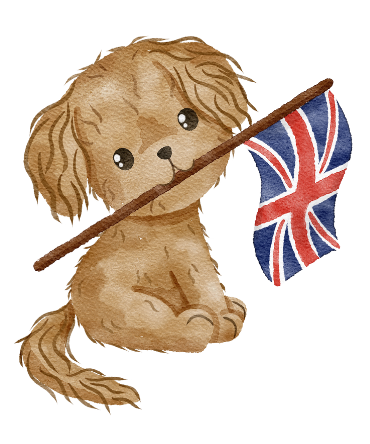Welcome,
Parents and Teachers!
Looking for educational and fun activities for your little explorers? Check out these quick, free, and creative ideas and downloads. Just print them out, grab your supplies, and let your children's imagination do the rest!
Charlie Wags' World Showcase: Pre-K to Grade 8
Charlie Wags invites students to create a World Showcase inspired by his travels! Other classes, select grades, or the whole school can participate in this customizable event. To prepare the showcase, each classroom or grade represents a different city from "The Tales of Charlie Wags" series (and beyond!). Different grade levels can offer activities and displays appropriate to their skills and age. Here's a detailed plan for organizing a large-scale event-- but feel free to tone it down (or up!) depending on your school's needs:
Preparation and Planning
- Assign Cities to Classrooms:
- Each classroom across different grades will be assigned a city from the series. Teachers can collaborate to select cities that best suit the interests and capabilities of their students.
2. Theme and Coordination:
- Establish an overall theme, such as "Charlie Wags' Journey Around the World."
- Plan a layout, with each classroom decorated to represent their assigned city. Determine the order in which visitors will move from room to room.
3. Grade-Level Responsibilities:
- Assign specific tasks and activities to each grade level based on their abilities.
Classroom Preparations by Grade Level
- Early Childhood (Preschool to Kindergarten):
- City Decoration and Simple Displays:
- Decorate the classroom to reflect the city's culture, using simple crafts like flags, paper lanterns for Tokyo, or mini–Eiffel Towers for Paris.
- Create basic posters or coloring pages showcasing key landmarks or cultural symbols.
- Performance:
- Prepare a simple song, dance, or short play related to the city’s culture. For example, a kindergarten class might perform a short dance from the assigned city's traditional dance style.
2. Lower Elementary (Grades 1-2):
- Craft Activities:
- Organize craft stations where visitors can make simple cultural items. For example, a class representing Mexico City might have a station to make mini piñatas or papel picado banners.
- Interactive Storytelling:
- Students can take turns sharing short stories or facts about their city. This could include a retelling of a local legend or a brief history of a famous landmark.
3. Upper Elementary (Grades 3-5):
- Cultural Exhibits and Presentations:
- Create more detailed displays with posters, artifacts, and digital presentations about the city’s history, traditions, and key attractions.
- Food Sampling:
- Research and prepare simple traditional foods from the city. Older students, with supervision, can prepare small, safe-to-eat samples. Examples include cookies, fruit, or bread from the culture. Considerations for allergies and dietary restrictions are necessary.
4. Middle School (Grades 6-8):
- Detailed Cultural Research and Presentation:
- Conduct in-depth research on their assigned city and create detailed reports or multimedia presentations. This can include videos, slideshows, or interactive displays.
- Cultural Cuisine and Culinary Demonstrations:
- Have students prepare traditional dishes from their assigned city with parents at home and bring them in for samples. For example, a class representing Spain might bring in simple version of paella. A classroom representing France may bring in store-bought croissants.
- Guided Tours:
- Middle school students can act as guides, leading groups of younger students and visitors from one classroom to another, providing context and additional information about each city.
Event Day Organization
- Setup:
- Decorate each classroom according to the city theme. Ensure that craft and food stations are ready, and all materials are in place.
- Middle school students can assist with setting up decorations, arranging displays, and ensuring everything is ready.
2. Event Flow:
- Classroom Visits:
- Visitors (students from other grades, parents, teachers) will visit each classroom in a predetermined order.
- Each classroom will have a designated time for performances, crafts, food tasting, and interactive activities.
- Guides:
- Middle school students will guide groups of visitors through the showcase, explaining the highlights and ensuring everyone stays on schedule.
3. Performances and Presentations:
- Schedule performances and presentations throughout the day. Ensure each class has time to showcase their work and activities.
- Create a schedule and map for visitors to follow, highlighting when and where each performance will take place.
Post-Event Activities
- Reflection and Sharing:
- After the event, gather students to discuss their experiences. Encourage them to share what they learned and enjoyed about the showcase.
- Display the crafts and projects around the school for a few days to share with the broader school community.
2. Clean-Up and Thank You:
- Organize a clean-up crew of students, teachers, and parent volunteers.
- Send thank-you post cards (a downloadable post card can be found above) to parents and volunteers who helped with the event.
3. Feedback Collection:
- Gather feedback from students, teachers, and parents to evaluate the event and identify areas for improvement.




